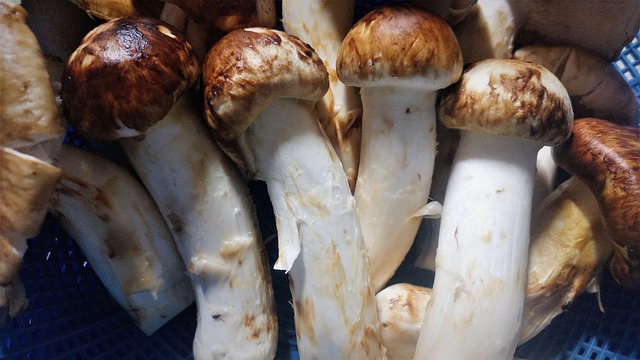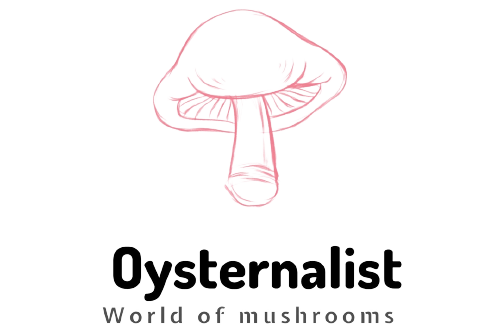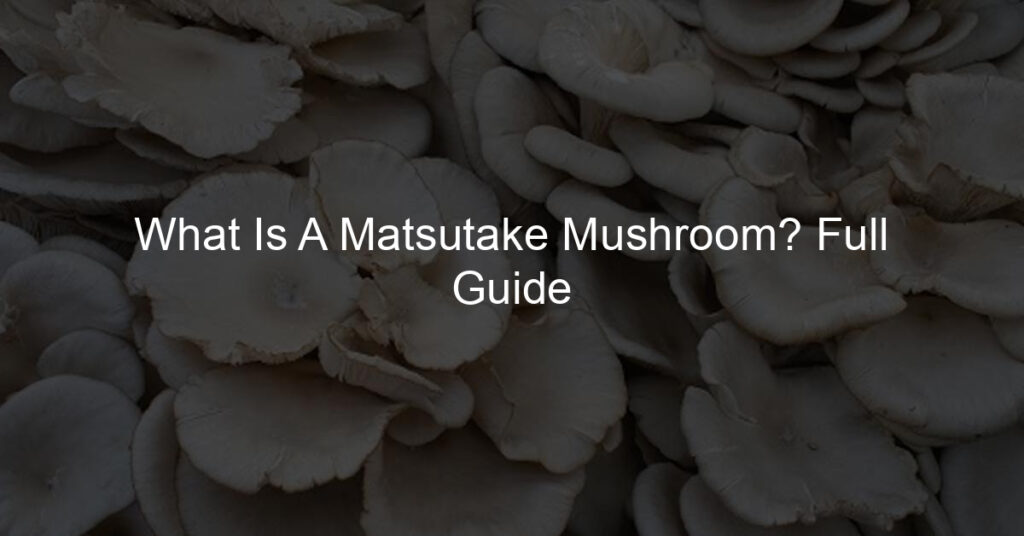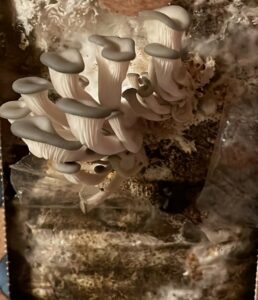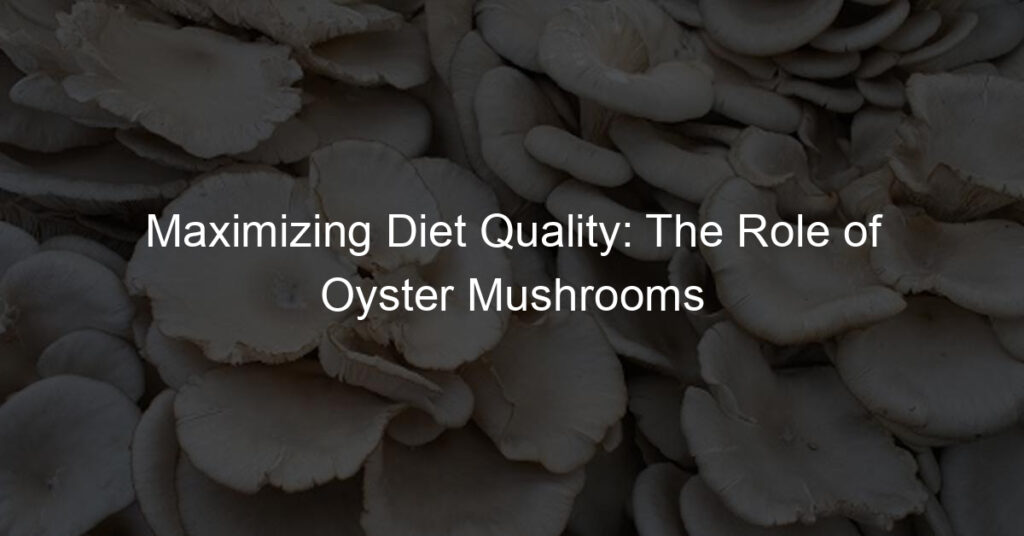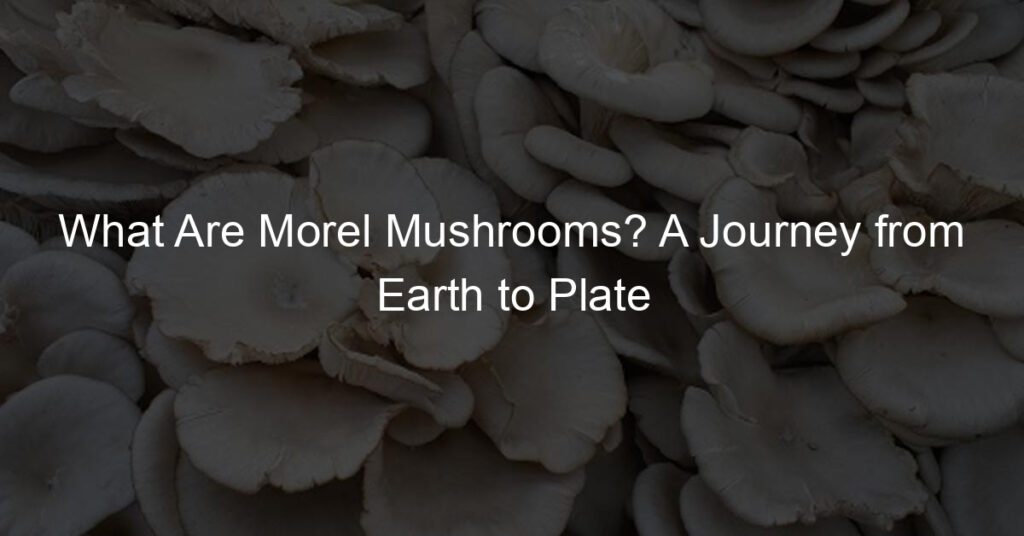When it comes to edible mushrooms, oyster mushrooms and matsutake mushrooms are two well-known ones. Both of them have their own unique taste and smell. So, which one is better?
It’s hard to tell. Although I personally love oyster mushrooms, sometimes I feel like matsutake mushrooms have a more distinct flavor.
Some people say that oyster mushrooms are more versatile when it comes to cooking, while others find matsutake mushrooms to be more flavorful. It really depends on your personal preference.
What Are Matsutake Mushrooms?
They are a type of edible mushroom (mycorrhizal mushrooms) that is native to Asia. They have a reddish-brown cap and a white stem. Matsutake mushrooms are known for their strong, earthy flavor. This mushroom is also called a pine mushroom because it often grows under pine trees, or in pine forests (especially red pine forests).
The history of pine mushrooms dates back to ancient Japan, where they were used in religious ceremonies. Matsutake mushrooms were also eaten by the samurai warrior class.
These mushrooms are still harvested in Japan today. They are also grown commercially in China, Korea, the Pacific Northwest, and North America.
Here is the list of the most known species:
-Tricholoma magnivelare (the North American matsutake): This species can be found in North America, especially in the Rocky Mountains. It tastes earthy with a hint of sweetness.
-Tricholoma matsutake (the Japanese matsutake): This species is found in Japan and Korea. It has a strong, earthy flavor.
-Tricholoma neausoesum (the Swedish matsutake): This species is found in Sweden. It has a nutty flavor with hints of cinnamon and cypress. their unique flavor is often described as being earthy and nutty, with hints of cinnamon and cypress, which gives it a spicy flavor.
-Tricholoma portentosum (the Australian matsutake): This species is found in Australia. It has a mild, sweet flavor.
T. neausoesum is the most expensive of all, fetching up to $1000 per kilogram in Japan.
Some of the most popular dishes that feature matsutakes are:
-Matsutake gobo (a Japanese dish made with sliced matsutake mushrooms and daikon radish)
-Matsutake rice (a Japanese dish made with rice and matsutake mushrooms)
-Matsutake soup (a Korean dish made with beef broth, matsutake mushrooms, and vegetables)
As you can see, there are many different ways to enjoy matsutake mushrooms.
Why are matsutake mushrooms so expensive?
Matsutake mushrooms are one of the most expensive mushrooms in the world, fetching up to $1,000 per pound. That makes them prized mushrooms for both chefs and home cooks.
Matsutake mushrooms are considered a delicacy in Japan and are often given as gifts. They are also used in traditional Japanese food, such as sushi and tempura.
Pine mushrooms are expensive because they are difficult to grow and harvest. They only grow in specific conditions and are only available for a short time each year.
These wild mushrooms are also becoming rarer due to deforestation and climate change.
So what makes them so pricey?
There are a few reasons for their high cost. Firstly, These mushrooms are quite rare. Secondly, they are difficult to cultivate, so most matsutake mushrooms on the market are wild-harvested. On top of that, they grow only in certain conditions and are only available for a short time each year.
This combination of rarity and difficulty of cultivation makes matsutakes a highly sought-after ingredient, especially in Japanese cuisine where they are used in traditional dishes such as miso soup.
If you’re lucky enough to find them for sale, be prepared to pay a pretty penny for them. But trust me, they’re worth it!
They are considered to be gourmet mushrooms, like truffles, and can be quite expensive.
Where do matsutake mushrooms grow?
Matsutake mushrooms are found in the wild all over the world, but they are most commonly associated with North America and Japan. In North America, they grow in the forests of the Pacific Northwest (i.e northern California), while in Japan they can be found in both deciduous and coniferous forests. They grow best in moist, shady areas with plenty of leaf litter. Pine mushrooms grow under coniferous trees, such as pine and fir. However, they can also be found growing under deciduous trees, such as oak and maple.
How do you identify matsutake mushrooms?
These mushrooms can be recognized by their clear white to flaky brown stem and cap. The caps are usually 3-10 cm in diameter, and they have a slightly convex shape. The gills are white or cream-colored, and they run down the stem of the mushroom. They also have a white ring around the stem, just below the cap.
This ring is a remnant of the mushroom’s universal veil, which covers the mushroom when it is in its infancy. The stem is typically 6-12 cm long and 2-3 cm wide. It is white or cream-colored, and it may have small red/brown flecks near the base. The flesh is white, and it has a light, sweet scent.
There are a few matsutake lookalikes, such as a Swollen-stalked cat mushroom (Catathelasma ventricosum) and Smith’s amanita (Amanita smithiana).
However, these mushrooms can be distinguished from matsutake by their darker stems and caps. If you are not sure whether or not a mushroom is a matsutake, it is best to err on the side of caution and not eat it.
What are the benefits of eating matsutake mushrooms?
They are a good source of vitamins and minerals, including vitamin D, potassium, and selenium. They also contain a compound called Ergothioneine, which is a powerful antioxidant.
These mushrooms have been shown to boost the immune system, improve heart health, and protect against cognitive decline. They are also a good source of fiber, which can help to regulate digestion.
When should matsutake mushrooms be harvested?
They are typically harvested in the late summer and fall. They can be found growing in the wild, or they can be cultivated. If you are harvesting matsutakes from the wild, make sure to get permission from the landowner first.
When collecting these mushrooms, it is important to use a sharp knife so that you do not damage the stem. It is also best to avoid picking mushrooms that are too small or too large.
Where can I buy matsutake mushrooms?
They can be purchased fresh, dried, or canned. They are typically more expensive than other types of mushrooms because they are harder to cultivate. Fresh mushrooms can usually be found at specialty grocery stores or farmers’ markets. Dried and canned matsutake mushrooms can be found in the international aisle of most grocery stores.
What is the best way to store matsutake mushrooms?
They should be stored in a cool, dry place. If they are stored in a plastic bag, make sure to puncture the bag so that they can breathe. Fresh matsutake mushrooms can be stored in the fridge for up to a week. Dried matsutake mushrooms can be stored in an airtight container for up to six months. Canned matsutake mushrooms can be stored in the pantry for up to a year.
What Do matsutake mushrooms taste like?
Matsutake mushrooms’ taste is a deep, rich flavor that is often described as being similar to cinnamon or cloves. They are very aromatic, and their taste has been compared to that of a pine forest.
Their texture is firm and meaty texture, and they can be used in a variety of dishes. When cooked, These mushrooms retain their shape and their flavor intensifies. They are commonly used in soups, stews, and stir-fries. Their unique taste makes them a popular ingredient in Asian cuisine.
Apart from making them on the grill, they are a mandatory ingredient in some Japanese dishes, like Matsutake Gohan. This is a special rice dish where the mushroom takes center stage, being simmered in dashi and soy sauce before the rice is added.
Oyster mushrooms VS matsutake mushroom
These two mushrooms are well known for their culinary value. They have some similarities and of course some key differences. Let’s take a closer look at each one.
| Oyster Mushroom | Matsutake Mushroom | |
| scientific name | Pleurotus ostreatus | Tricholoma matsutake |
| Habitat | grow in clusters on decaying hardwood stumps, logs, and tree branches. They are also commonly cultivated on straw or sawdust
|
found in mixed forests with conifers, most often under pines |
| Fruiting Body | The cap is convex to shell-shaped and 2-10 cm in diameter. The caps are white, grey, brown, or cream-colored when young and become darker as they age. The gills are adnexed or free from the stipe and white to pale grey. The stipe (or stem) is absent or very short, and the base of the stipe is often attached to wood. The flesh is white with a firm texture | have a large, umbrella-shaped cap that is 5-15 cm in diameter. The caps are brown to reddish-brown and often have white spots. The gills are attached to the stipe and are white to pale brown. The stipe (or stem) is 5-15 cm long and white to pale brown. The flesh is white with a firm texture |
| Spore Print | White | White |
| Uses | commonly used in soups, stir-fries, and as it is | often used in Japanese cuisine, soups, and as a flavor addition |
| Growth | grow in clusters on decaying hardwood stumps, logs, and tree branches. They are also commonly cultivated on straw or sawdust | are found in mixed forests with conifers, most often under pine trees |
| Nutrition | good source of vitamins B and C, potassium, selenium, copper, and pantothenic acid | good source of vitamin D. Also, like other mushrooms, it contains compounds that may have medicinal properties |
When it comes to mushrooms, there are many different types to choose from. But if you’re looking for a unique and delicious mushroom, then you can’t go wrong with matsutake mushrooms.
